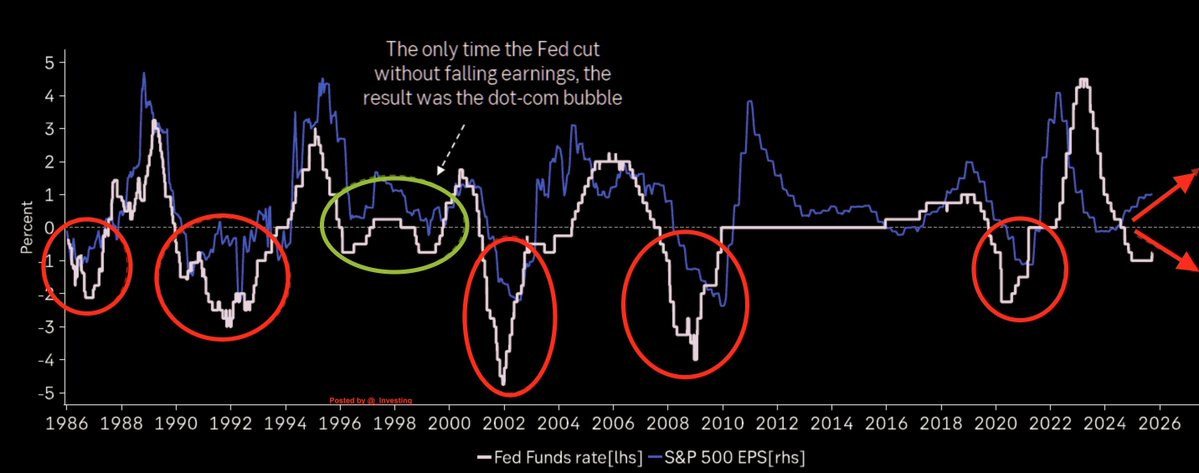
Starting a rate cut cycle with double digit earnings has only happened once in the past forty years. The last time ended with the dot-com bubble. In the late 1990s, the Fed lowered interest rates even though company profits were still climbing fast. That extra boost of easy money pushed stock prices even higher and created one of the biggest bubbles in market history. When profits finally slowed a few years later, rate cuts couldn’t stop the crash that followed. It showed the risk of easing policy when the economy and earnings are still strong. Right now, the situation looks a lot like that moment. The Fed has started cutting rates even though corporate profits are still growing quickly and the stock market is hitting record highs. Normally, rate cuts happen when profits are falling or the economy is sliding into recession. That’s why many analysts say today’s setup is unusual. Instead of providing support when the economy needs it, rate cuts could be pouring fuel on a market that is already expensive, making it easier for a bubble to form.
Another thing to remember is that the Fed often waits until it clearly sees trouble before cutting rates. It usually holds off until unemployment starts to rise significantly or the job market weakens. Today, the unemployment rate is 4.3 percent, which is still low by historical standards, though the Fed expects it to climb to 4.5 percent by the end of the year. Chair Jerome Powell framed this move as a “risk management cut,” meaning the Fed is trying to act before things worsen rather than after weakness shows up. That makes this decision stand out even more, because it breaks from the Fed’s usual pattern of waiting until trouble is obvious.Markets often do well at the start of a cutting cycle if there’s no recession and earnings stay strong. But when cuts happen at high valuations while profits are still rising, history shows it can plant the seeds of instability. Once profits eventually cool, easier policy may not be enough to protect against big declines. The dot-com era proved how easing in the wrong environment can create short-term optimism but lead to longer-term pain.Source: StockMarket.News
The copyright of this article belongs to the original author/organization.
The views expressed herein are solely those of the author and do not reflect the stance of the platform. The content is intended for investment reference purposes only and shall not be considered as investment advice. Please contact us if you have any questions or suggestions regarding the content services provided by the platform.


